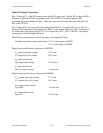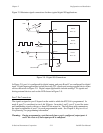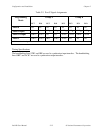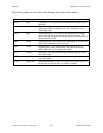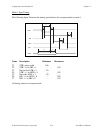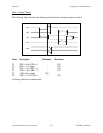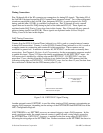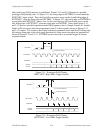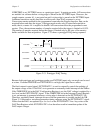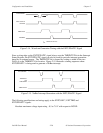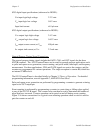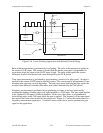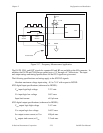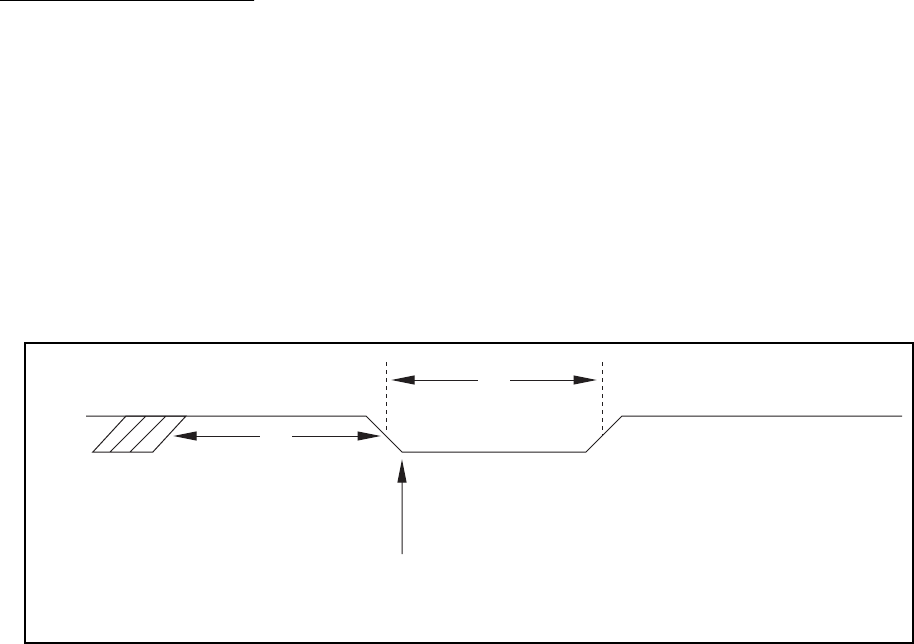
Chapter 2 Configuration and Installation
© National Instruments Corporation 2-17 Lab-NB User Manual
Timing Connections
Pins 38 through 48 of the I/O connector are connections for timing I/O signals. The timing I/O of
the Lab-NB is designed around the 8253 Counter/Timer integrated circuit. Two of these integrated
circuits are employed in the Lab-NB. One, designated 8253(A), is used exclusively for DAQ
timing, and the other, 8253(B), is available for general use. Pins 38 through 40 carry external
signals that can be used for DAQ timing in place of the dedicated 8253(A). These signals are
explained under DAQ Timing Connections later in this chapter. Pins 41 through 48 carry general-
purpose timing signals from 8253(B). These signals are explained under General-Purpose
Timing Connections later in this chapter.
DAQ Timing Connections
Counter 0 on the 8253(A) Counter/Timer (referred to as A0) is used as a sample-interval counter
in timed A/D conversions. Counter 1 on the 8253(B) Counter/Timer (referred to as A1) is used as
a sample counter in conjunction with counter 0 for data acquisition. These counters are not
available for general use. In addition to counter A0, EXTCONV* can be used to externally time
conversions. See Chapter 4, Register-Level Programming, for the programming sequence needed
to enable this input. Figure 2-10 shows the timing requirements for the EXTCONV* input. An
A/D conversion is initiated by a falling edge on the EXTCONV*. If EXTCONV* stays low
more than 12
µsec, the data from this conversion is not latched into the FIFO memory until the
following rising edge on EXTCONV*. If EXTCONV* stays low less than 12
µsec, the data from
this conversion is latched into the FIFO memory after 12
µsec.
A/D Conversion starts within
125 nsec from this point
EXTCONV*
t
w
250 nsec minimum
(worst-case)
(100 nsec typical)
V
IH
V
IL
t
w
t
w
Figure 2-10. EXTCONV* Signal Timing
Another external control, EXTTRIG, is used for either starting a DAQ sequence or terminating an
ongoing DAQ sequence, depending on the settings of the EXTTRIGEN and PRETRIG bits in the
ADC Configuration Register.
If EXTTRIGEN is set, EXTTRIG serves as an external trigger to start a DAQ sequence. In this
mode, posttrigger mode, the sample-interval counter is gated off until a rising edge is sensed on
the EXTTRIG line. EXTCONV*, however, is enabled on the first rising edge of EXTCONV*,
following the rising edge on the EXTTRIG line. Further transitions on the EXTTRIG line have no




